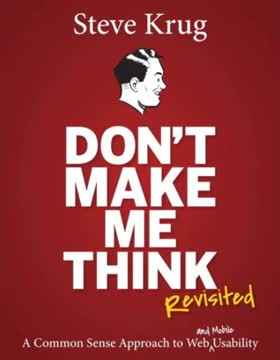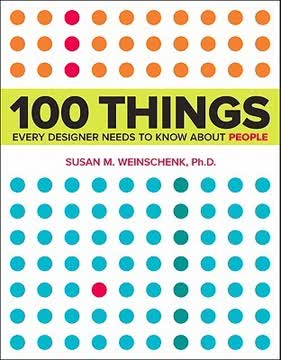Key Takeaways
1. Your brain has three parts: old, mid, and new, all working together
What really makes us human is that we have all three.
The triune brain. Our brain consists of three interconnected parts: the old brain, mid brain, and new brain. The old brain, our most primitive part, is responsible for survival instincts, automatic functions, and constantly scanning for danger. The mid brain processes emotions and drives impulsive behavior. The new brain, or cortex, handles language, reasoning, and conscious thought.
Interplay of brain parts. These three brain systems work in concert, influencing our perceptions, decisions, and actions. For example, while driving (old brain), we might think about an argument (new brain) and feel upset (mid brain). This interplay explains why our physical state affects our emotions and thoughts, and vice versa.
Evolutionary perspective. This three-part structure reflects our evolutionary history, with each part developing at different stages. Understanding this helps explain why we sometimes act irrationally or against our conscious intentions – our older brain systems can override our newer, more rational ones.
2. The unconscious mind drives most of our decisions and actions
Our unconscious minds are very smart. But we don't control them.
Unconscious power. The unconscious mind processes an estimated 11 million bits of information per second, compared to only 40 bits processed consciously. This vast computational power allows us to navigate complex environments and make rapid decisions without conscious effort.
Hidden influences. Research shows that our behavior is often influenced by factors we're unaware of:
- In word-scrambling experiments, participants' subsequent behavior was influenced by the types of words they unscrambled, without their knowledge.
- In gambling experiments, participants' physiological responses indicated awareness of optimal strategies long before they consciously realized it.
Implications. Recognizing the power of the unconscious mind has profound implications for marketing, design, and personal decision-making. It suggests that appealing to unconscious processes may be more effective than purely logical arguments.
3. We are powerfully influenced by social validation and the need to belong
People look to others to decide what they should do. This is especially true when they are uncertain about whether or what action to take.
Social creatures. Humans have a deep-seated need to fit in and belong, which is wired into our brains and biology. This drive often leads us to look to others for cues on how to behave, especially in uncertain situations.
Power of social proof. Social validation significantly influences our behavior:
- In emergency situations, the presence of others can actually reduce the likelihood of an individual helping (bystander effect).
- Online, the number of positive reviews or ratings can greatly influence our perception of a product or service.
- Even in trivial matters, like choosing cookies, we tend to prefer options that others have chosen.
Leveraging social validation. Websites and marketers can harness this tendency by:
- Displaying customer reviews and ratings prominently
- Showing how many people have purchased or used a product
- Highlighting popular choices or "trending" items
4. Reciprocity and concession are potent tools of persuasion
If I give you a gift or do you a favor, you will feel indebted to me.
The reciprocity principle. When someone does something for us, we feel a strong urge to reciprocate. This principle is deeply ingrained in human societies and has been crucial for cooperation and survival.
Reciprocity in action:
- In experiments, people were more likely to buy raffle tickets from someone who had given them a soda earlier.
- Providing free samples or information can create a sense of obligation in potential customers.
- Even small gestures, like personalized address labels in donation requests, can significantly increase response rates.
The power of concession. A related principle is concession, where rejecting a larger request makes people more likely to agree to a smaller one. This "rejection-then-retreat" technique can be highly effective in negotiations and sales.
5. Scarcity makes us want things more, but too many choices paralyze us
If it's scarce, we think it is more valuable and more desirable. We'll want it more.
Scarcity's allure. When something seems rare or limited, we tend to value it more highly. This principle applies not just to physical goods, but also to information and opportunities.
Examples of scarcity in marketing:
- Limited-time offers
- "Only X left in stock" notifications
- Exclusive access or memberships
The paradox of choice. While we think we want many options, having too many choices can actually hinder decision-making:
- In the "jam study," more flavors attracted more people, but fewer actually purchased.
- Too many options can lead to decision paralysis and less satisfaction with our choices.
Implications for design. When presenting options, it's often better to offer a carefully curated selection rather than an overwhelming array of choices.
6. We are self-centered beings, attracted to danger, food, and sex
To the old brain, everything is all about you. You are all that matters.
The self-centered brain. Our old brain is primarily concerned with our own survival and well-being. This self-focus is not a moral failing, but a fundamental aspect of our neural wiring.
Attention-grabbing stimuli. The old brain is particularly attuned to:
- Danger: Anything threatening captures our attention quickly
- Food: Images of food are inherently engaging
- Sex: Even subtle sexual cues can be powerful attention-grabbers
Implications for communication. To engage the old brain effectively:
- Use the word "you" frequently
- Incorporate images or themes related to danger, food, or sex when appropriate
- Ensure content changes or moves to maintain attention
7. Fear of loss is a stronger motivator than the prospect of gain
We are programmed to pay attention to, and to avoid, loss.
Loss aversion. Humans are generally more motivated to avoid losses than to acquire equivalent gains. This tendency is deeply rooted in our psychology and influences many of our decisions.
Examples of loss aversion:
- People are more likely to take risks to avoid a loss than to secure a gain
- Framing a medical treatment as having a "90% survival rate" is more effective than saying it has a "10% mortality rate"
- In marketing, emphasizing what customers might lose by not acting can be more persuasive than highlighting potential gains
Unconscious awareness. Our bodies and unconscious minds often detect potential losses before we're consciously aware of them, as shown in experiments where physiological responses precede conscious realization.
8. Stories and pictures are the most effective ways to communicate
If you want to get and hold someone's attention, tell a story.
The power of narrative. Our brains are wired to process and remember information in story form. Stories engage multiple brain areas, making the information more memorable and impactful.
Visual processing. A significant portion of our brain is dedicated to visual processing, making images particularly effective for communication:
- We can remember more than 2,500 pictures with 90% accuracy
- We remember only 10% of what we hear or read without pictures
Combining stories and visuals. The most powerful communication:
- Uses both narrative and visual elements
- Breaks information into digestible "chunks"
- Engages emotions as well as intellect
9. We are inherently social animals, always seeking connection
We are social animals. Being human means being social.
The social imperative. Throughout history, humans have consistently adapted new technologies to serve social purposes. This tendency is deeply rooted in our evolution as a species.
Examples of technology becoming social:
- The printing press enabled mass communication
- Telephones, initially intended for business, became household items
- The internet, originally a military project, became a global social network
The rise of social media. Platforms like Facebook, Twitter, and LinkedIn are natural extensions of our social nature, enabling unprecedented levels of connection and information sharing.
10. Effective Web design leverages our psychological tendencies
Web sites that "speak" to all three brains (old brain, mid brain, new brain) are the most effective.
Holistic design approach. To create compelling websites, designers should consider how to engage all aspects of the brain:
- Old brain: Use danger, food, or sex-related imagery; incorporate movement or change
- Mid brain: Evoke emotions through stories and visuals
- New brain: Provide logical arguments and data
Key design principles:
- Use social proof (reviews, ratings, user numbers)
- Create a sense of scarcity or urgency
- Offer a carefully curated set of choices
- Incorporate storytelling and strong visuals
- Leverage reciprocity (e.g., free information or tools)
Ethical considerations. While these principles can be powerful persuasion tools, it's crucial to use them ethically and in ways that genuinely benefit users.
Last updated:
FAQ
What's "Neuro Web Design: What Makes Them Click?" about?
- Focus on Persuasion: The book explores how web design can be optimized to persuade users by tapping into their unconscious mind.
- Three Brains Concept: It introduces the idea that humans have three brains—the old brain, mid brain, and new brain—and how each plays a role in decision-making.
- Behavioral Triggers: The book discusses various psychological triggers like social validation, scarcity, and reciprocity that influence online behavior.
- Scientific Backing: It is grounded in neuroscience and psychology, providing scientific explanations for why certain web design elements work.
Why should I read "Neuro Web Design: What Makes Them Click?" by Susan M. Weinschenk?
- Improve Web Design: If you're involved in web design or digital marketing, this book offers insights into creating more persuasive and effective websites.
- Understand User Behavior: It helps you understand the unconscious factors that drive user behavior online, which can be crucial for increasing engagement and conversions.
- Scientific Approach: The book is based on scientific research, making it a credible source for understanding the psychological aspects of web design.
- Practical Applications: It provides actionable advice and examples that can be directly applied to improve your website's design and user experience.
What are the key takeaways of "Neuro Web Design: What Makes Them Click?"?
- Three Brains Model: Understanding the roles of the old brain, mid brain, and new brain in decision-making is crucial for designing persuasive websites.
- Social Validation: People are influenced by the actions and opinions of others, making social proof a powerful tool in web design.
- Scarcity and Urgency: Creating a sense of scarcity or urgency can drive users to take action more quickly.
- Reciprocity Principle: Offering something of value for free can create a sense of obligation in users, encouraging them to reciprocate.
How does "Neuro Web Design" explain the concept of the "Three Brains"?
- Old Brain: This is the most primitive part, focused on survival, and is responsible for automatic functions like breathing and digestion.
- Mid Brain: It processes emotions and is involved in impulse buying, making it crucial for understanding consumer behavior.
- New Brain: Responsible for higher-order functions like reasoning and planning, it is the part that reads and processes information consciously.
- Interconnectedness: The book emphasizes how these three parts work together, influencing our decisions and actions both consciously and unconsciously.
What is the role of social validation in "Neuro Web Design"?
- Influence of Others: Social validation is the idea that people look to others to determine how to behave, especially in uncertain situations.
- Online Reviews: The book highlights how online ratings and reviews can significantly influence purchasing decisions, even from strangers.
- Bystander Effect: It discusses how the presence of others can affect individual actions, both online and offline.
- Design Implications: Incorporating elements that show what others are doing or have done can make a website more persuasive.
How does "Neuro Web Design" address the concept of scarcity?
- Perceived Value: Scarcity increases the perceived value of an item, making it more desirable to users.
- Limited Availability: The book suggests using phrases like "only two left in stock" to create urgency and prompt quicker decision-making.
- Time Constraints: Offers that are available for a limited time can also drive users to act more quickly.
- Information Scarcity: Not just products, but information that seems exclusive or hard to get can also be more appealing.
What does "Neuro Web Design" say about the power of reciprocity?
- Sense of Obligation: When users receive something for free, they feel a sense of obligation to reciprocate, often by making a purchase.
- Free Offers: The book advises offering free shipping or free information as a way to trigger reciprocity.
- Concession Tactics: It discusses how making a larger initial request, followed by a smaller one, can lead to higher compliance.
- Cultural Universality: Reciprocity is a principle that works across different cultures, making it a versatile tool in web design.
How does "Neuro Web Design" suggest using stories and pictures?
- Attention-Grabbing: Stories and pictures are effective at capturing and holding users' attention, making them powerful tools in web design.
- Emotional Engagement: They engage multiple parts of the brain, including those responsible for emotions, enhancing memory and recall.
- Narrative Structure: The book explains how stories provide a structure that helps users process and remember information more effectively.
- Visual Processing: Given that a significant portion of the brain is devoted to visual processing, pictures can be more memorable than text alone.
What are the best quotes from "Neuro Web Design" and what do they mean?
- "We like to think we make our decisions based on careful thought, but most of our decisions and actions come from our unconscious." This highlights the book's central theme that unconscious processes heavily influence decision-making.
- "Web sites that 'speak' to all three brains (old brain, mid brain, new brain) are the most effective." This emphasizes the importance of designing websites that engage all parts of the brain for maximum impact.
- "If something is scarce, it will seem more desirable and more valuable to us." This quote underscores the power of scarcity as a psychological trigger in web design.
- "Giving a gift triggers indebtedness, which increases the likelihood that others will reciprocate by giving you something." This illustrates the principle of reciprocity and its effectiveness in encouraging user action.
How does "Neuro Web Design" explain the concept of commitment and consistency?
- Self-Personas: The book discusses how people have multiple personas and strive for consistency in their actions to align with these personas.
- Small Commitments: Making a small initial commitment can lead to larger commitments over time, as people adjust their personas to align with their actions.
- Public Declarations: Publicly stating a commitment, even in writing, strengthens the likelihood of following through.
- Web Design Application: Websites can use surveys, reviews, and other interactive elements to encourage users to make commitments, thereby increasing engagement.
What does "Neuro Web Design" say about the role of fear in decision-making?
- Fear of Loss: The book explains that people are more motivated by the fear of losing something than by the prospect of gaining something.
- Emotional Triggers: Fear can activate the amygdala, leading to heightened emotional responses and quicker decision-making.
- Loss Aversion: People are more likely to take action to avoid losing what they already have, rather than to gain something new.
- Design Strategies: Web designers can use fear-based messaging, such as highlighting potential losses, to prompt user action.
How can "Neuro Web Design" help improve my website's effectiveness?
- Engage All Three Brains: Design your website to engage the old brain, mid brain, and new brain for a comprehensive user experience.
- Utilize Psychological Triggers: Incorporate elements like social validation, scarcity, and reciprocity to influence user behavior.
- Tell Stories and Use Images: Use storytelling and visual elements to capture attention and enhance memory retention.
- Encourage Commitment: Use interactive elements like surveys and reviews to encourage user commitment and increase engagement.
Review Summary
Neuro Web Design receives mixed reviews, with ratings ranging from 1 to 5 stars. Readers appreciate its concise explanation of psychological principles applied to web design, citing its usefulness for beginners and as a refresher for experienced designers. Some find the content basic and outdated, while others value its insights into human behavior and decision-making. Critics note that the book's examples can be simplistic or ethically questionable. Many reviewers recommend it as an introductory text but suggest more comprehensive alternatives for in-depth study.
Similar Books










Download PDF
Download EPUB
.epub digital book format is ideal for reading ebooks on phones, tablets, and e-readers.






